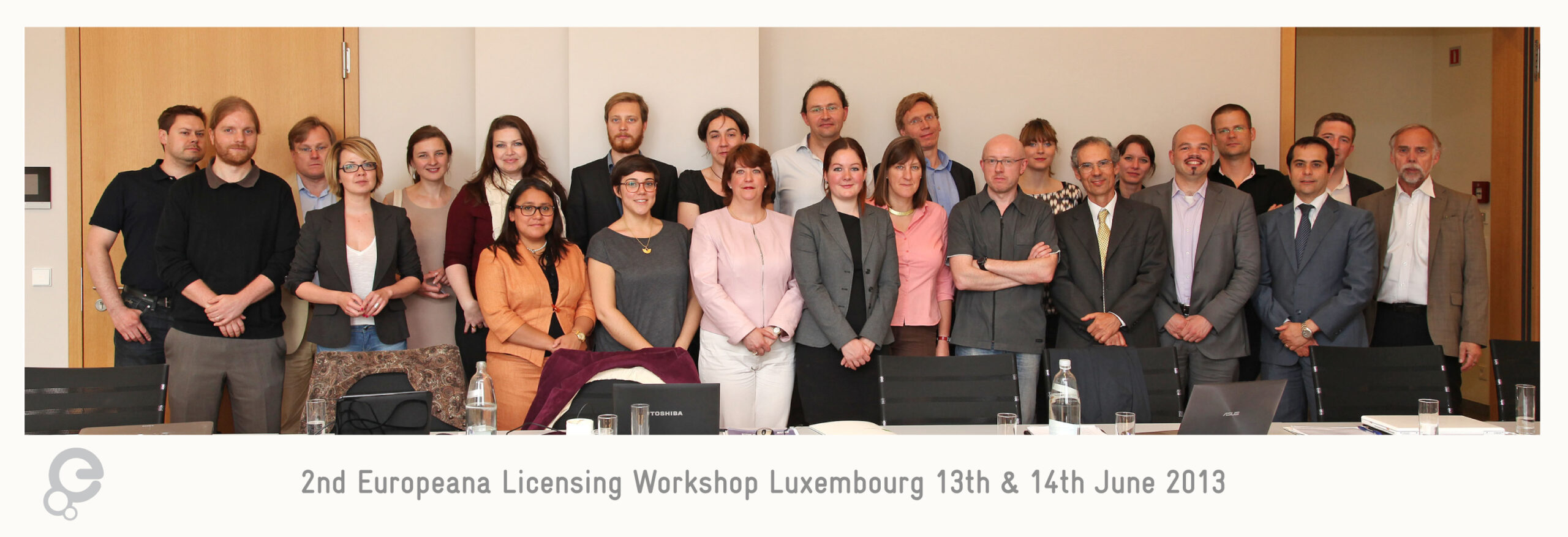Our colleagues from the Europeana Awareness project held their second Licensing Workshop in Luxemburg on the 13th and 14th of June. Réka Markovich went to present the efforts EUscreen has taken to bring a massive broadcast collection with different national copyright laws online. She represented the new EUscreenXL project, in which we’ll continue our research and approaches on providing access to audiovisual heritage.
Report by Réka Markovich from ELTE University, Hungary.
Europeana Awareness is a Best-Practice Network led by the Europeana Foundation. It’s been designed to publicize Europeana to users, policy makers, politicians and cultural heritage organizations in every Member State. The second Europeana Licensing workshop was part of research undertaken for the Europeana Awareness project by the Bibliothèque nationale de Luxembourg, Kennisland and the Institute for Information Law (IvIR). Their research focuses on possible international licensing models for digital heritage and the legal framework for cross-border licensing of copyright-protected works in Europe. In practice, this means that it explores the conditions under which works contained in the collections of cultural heritage institutions could be regulated on a cross-border basis in the context of Europeana.
Models for Cross-Border Licensing
The workshop aimed at gathering information to map the practice and implementation of the Orphan Works Directive and possible alternative contractual arrangements (such as those based on the Memorandum of Understanding on Out-of-Commerce Works). It complements a questionnaire to the European member states about the creation of an international database of Orphan Works. Member States will have to pass legislation implementing the Directive by October 2014. As far as the database is concerned, they will have to play the role of “interface” between beneficiary institutions (libraries etc) and the office for the harmonisation of the internal market (OHIM), an EU agency with responsibility in the area of IPR, based in Alicante, Spain. The focus of this process is to identify possible loopholes in the cross-border access and re-use of works that is caused by differing national arrangements regarding categories of works, beneficiaries, scope and conditions of use, etc. For those who’d like to get an idea of the wide variety of copyrights clearance regulations in different European countries, the Public Domain Calculator gives you a good idea.
Cross-border access and use depend not only on a clear legal framework, but also on effective data collection and rights management. Therefore the workshop’s first day focused on the practical implementation of data registries, data creation and data exchange processes between the relevant actors. It was interesting to see what kind of organizations work on copyright clearance: e.g. with facilitating rights information management (ARROW) or with developing building blocks for the expression and management of rights and licensing across all content and media types (Linked Content Coalition). While legal issues cannot be easily separated from more administrative issues, day two focused on legal interoperability issues of implementing alternative (contractual) mechanisms.
Rights for Audiovisual Works
Issues of intellectual property rights are crucial when providing access to audiovisual collections. As a part of legislation, copyright law still bears some territorial nature – while a Pan-European audiovisual archive touches upon cross-border legal issues. Some kind of harmonization would be necessary to ensure the possibility of publishing and providing access to our audiovisual heritage. The Memorandum of Understanding on Key Principles on the Digitization and Making Available of Out-of-Commerce Works is sector-specific: it covers books and learned journals only. A dialogue between stakeholders is the way forward to facilitate agreements for the digitization of European out-of-commerce cultural material in other sectors—e.g. on audiovisual works—as well.
EUscreenXL will provide Europeana with 1.000.000 metadata records giving access for online content held by European broadcasters and audiovisual archives and will publish 20.000 contextualized programmes on the EUscreen portal. As the audiovisual content aggregator for Europeana, all the work packages of EUscreenXL take their cue from Europeana’s working groups. In EUscreenXL we are also working on a strategic agenda for access to audio-visual heritage through Europeana. The task is a pan-European research effort. It covers seven topics closely related to the daily reality of audio-visual archives, one of which is intellectual property rights. This activity is essential for Europeana to reach out to the audio-visual domain and understand what needs to be put in place in order to maximize contributions to Europeana. It was therefor fascinating to hear about the legal issues-related activities of Europeana, to be in touch with the Europeana project working groups and the people behind them.
More information
- A good introduction to copyright issues for cultural heritage, with examples from the audiovisual domain, can be found in Dr. Paul Klimpel’s Copyright Law, Practice and Fiction. [PDF]
- All presentations from the workshop have been published on the Europeana Licensing Slideshare.
- More info on European copyright themes can be found on the website Licenses for Europe.
- Lisette Kalshoven’s account of this workshop was published on the Europeana Pro blog.
- See our list of relevant literature on IPR on our IPR reference page or on Zotero.



